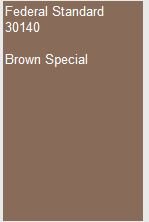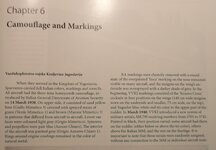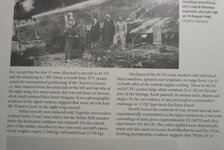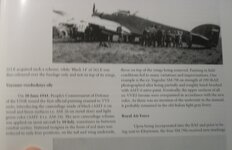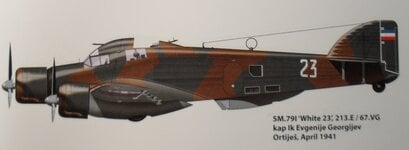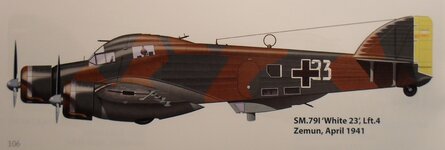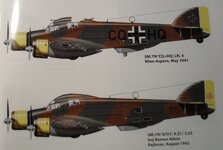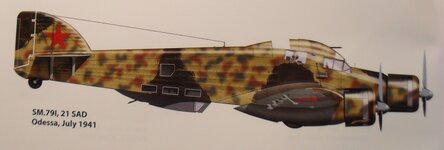Ralph Haus
Tech Sergeant
Username: Ralph Haus
First name: Ralph
Category: Intermediate
Manufacturer: Airfix
Model: Savoia-Marchetti SM79 - Kit A04007V
Scale: 1:72
Other: Yugoslavian decals, if I can find some?
This kit just drew my eye, it certainly is unique and fits within the 'rules' of the Heavy Hitters build. The kit, although released as a torpedo version, will be done as a bomber version, a role it had in the Yugoslavian service; an SM79K.
The original Royal Yugoslav Air Force operated from 1918 to 1941. At the beginning of WWII the RYAF had over 460 aircraft and 2000 pilots. The RYAF ceased to exist following the Axis invasion, April 6th, 1941 - April 18th, 1941. Many of their aircraft were destroyed or captured. The serviceable captured craft were distributed to other Axis nations including the newly formed Croatian air force. But many were also flown to other countries, such as Russian, where they were put into service.
My intention is to finish with the Yugo markings, however if too difficult to find those markings I may shift to the Russian version or possibly the Croatian. From what I have found so far, camo wise, the pattern and the colors are much the same. If I understand correctly, the Russian just replaced the national markings, leaving the paint schemes alone?
The kit.The box is (released), a 2020 version; but there has only been one 'new parts' release, 1967. Plenty of new boxes. The image of the sprus, as shaken out of one bag, is an indication of the age. I had not separated any of the parts, this is how they 'shook out'. Very heavy flash, and a bent prop.




My initial research turned up this camo scheme, associated with the RYAF.

A color version of the above. The Yugo emblems are identifiable on the under wings.

Another Yugo version. The camo scheme is similar to the Russian version that I have found.

Russian service 79K

An interesting detail on the camo schemes, at least on the Italian side. There seems to have been a wide variation of patterns and colors that were used, and specific to aircraft. I'm not sure how that translates to units shipped to other countries? Italy issued a new standard (1941-1943), Tavola-10, for colors and markings. I'm not sure what Yugo 1941 units were under these standards? Only important in the the paint colors changed and I will need to decide what 'vintage' 1941 I will be finishing. Although, speculation, most of the Yugo 79K units were produced pre-1941?
First name: Ralph
Category: Intermediate
Manufacturer: Airfix
Model: Savoia-Marchetti SM79 - Kit A04007V
Scale: 1:72
Other: Yugoslavian decals, if I can find some?
This kit just drew my eye, it certainly is unique and fits within the 'rules' of the Heavy Hitters build. The kit, although released as a torpedo version, will be done as a bomber version, a role it had in the Yugoslavian service; an SM79K.
The original Royal Yugoslav Air Force operated from 1918 to 1941. At the beginning of WWII the RYAF had over 460 aircraft and 2000 pilots. The RYAF ceased to exist following the Axis invasion, April 6th, 1941 - April 18th, 1941. Many of their aircraft were destroyed or captured. The serviceable captured craft were distributed to other Axis nations including the newly formed Croatian air force. But many were also flown to other countries, such as Russian, where they were put into service.
My intention is to finish with the Yugo markings, however if too difficult to find those markings I may shift to the Russian version or possibly the Croatian. From what I have found so far, camo wise, the pattern and the colors are much the same. If I understand correctly, the Russian just replaced the national markings, leaving the paint schemes alone?
The kit.The box is (released), a 2020 version; but there has only been one 'new parts' release, 1967. Plenty of new boxes. The image of the sprus, as shaken out of one bag, is an indication of the age. I had not separated any of the parts, this is how they 'shook out'. Very heavy flash, and a bent prop.
My initial research turned up this camo scheme, associated with the RYAF.
A color version of the above. The Yugo emblems are identifiable on the under wings.
Another Yugo version. The camo scheme is similar to the Russian version that I have found.
Russian service 79K
An interesting detail on the camo schemes, at least on the Italian side. There seems to have been a wide variation of patterns and colors that were used, and specific to aircraft. I'm not sure how that translates to units shipped to other countries? Italy issued a new standard (1941-1943), Tavola-10, for colors and markings. I'm not sure what Yugo 1941 units were under these standards? Only important in the the paint colors changed and I will need to decide what 'vintage' 1941 I will be finishing. Although, speculation, most of the Yugo 79K units were produced pre-1941?




